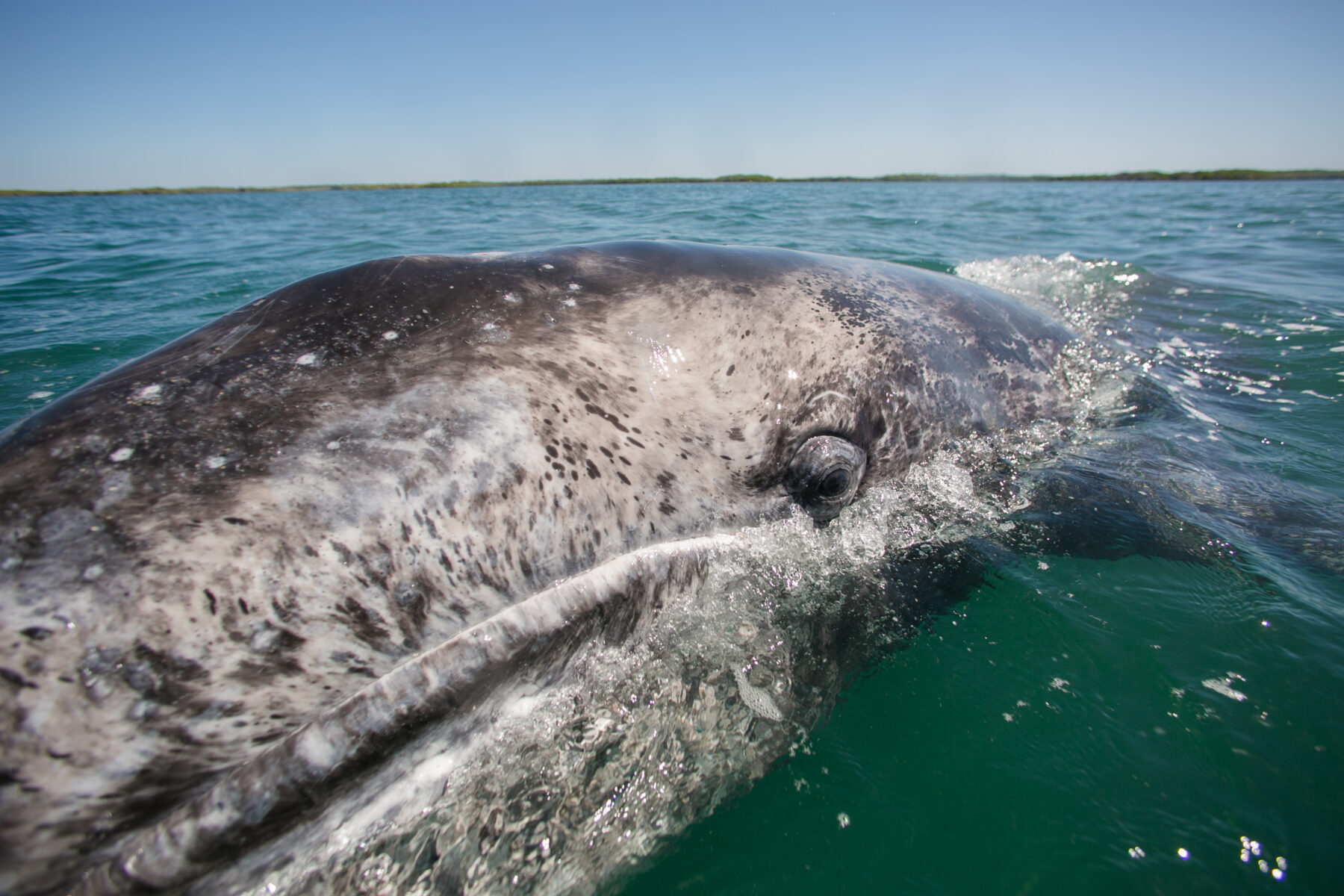Baja California Sur (December 10, 2024) – Every winter, Baja California Sur, located at the southern tip of Mexico’s Baja Peninsula, becomes a captivating haven for whale enthusiasts as over 20,000 gray, humpback, and blue whales embark on a 6,000-mile journey from the cold waters of Alaska to the nutrient-rich bays and lagoons of the region, where they mate, socialize, and give birth. This annual migration provides a rare and magical opportunity for locals and visitors alike to witness these graceful mammals up close, making Baja California Sur a bucket-list destination for wildlife lovers and adventure seekers.
The charming city of Loreto, known for its natural beauty and intimate proximity to nature’s finest offerings, is home to the awe-inspiring blue whale from early January to late March. As the largest animal on Earth, blue whales can grow over 100 feet long and weigh as much as 30 elephants combined. Often elusive and shy, these colossal creatures migrate south along the western side of the Baja Peninsula and, for a few months each winter, explore the serene waters of the UNESCO World Heritage Loreto Bay Marine National Park. With only 11,000 blue whales remaining, the Gulf of California stands as one of the few places on Earth where these gentle giants can be seen in warm waters, making the experience truly rare and unforgettable.

To the north, the coastal town of Mulegé serves as a gateway to the lagoons of San Ignacio and Ojo de Liebre in the Pacific Ocean, where gray whales gather to breed and give birth. Part of the El Vizcaíno Biosphere Reserve—Latin America’s largest wildlife sanctuary—these shallow lagoons have been a primary breeding ground for gray whales for thousands of years. Visitors can take small boat excursions, where playful gray whales often approach the boats, offering intimate and unforgettable encounters with these majestic creatures from early February to early April.
In addition to gray and blue whales, Baja California Sur also offers opportunities to spot humpback, finback, and sperm whales. Whale watching is highly regulated in the region, with small tour groups led by experienced marine biologists and local whale experts. These guides ensure a respectful and educational experience by maintaining a safe distance from the whales, protecting their natural behaviors and habitats.

Local tour operators such as Tours Loreto and Wild Loreto Tours provide expert-guided excursions that allow visitors to observe blue whales in their natural habitat. Tours for gray whale watching in the southwest municipality of Comondú in the serene Magdalena Bay can be booked with Magdalena Bay Whales, and tours in northern Mulegé are offered by Baja Eco Tours and Kuyimá tours. New for 2025, Baja Luxury Sailing will also introduce a unique catamaran adventure that allows visitors to spend overnight stays at the islands, providing an immersive way to explore Baja’s coastal beauty and marine life.
Beyond whale watching, Baja California Sur is a haven for outdoor activities, including kayaking, snorkeling, diving, mountain biking, and hiking. The region is teeming with wildlife, including seabirds, dolphins, and sea lions, which can be spotted along the coast. Loreto, Mulegé, and Comondú also offer opportunities to experience the charm of local towns, with family-owned shops, fresh seafood restaurants, and warm hospitality providing the perfect complement to a day of adventure. Whether observing the planet’s largest mammals in the wild or exploring the region’s rugged coastlines, Baja remains a premier destination for those seeking a connection with nature that is both awe-inspiring and intimate.







